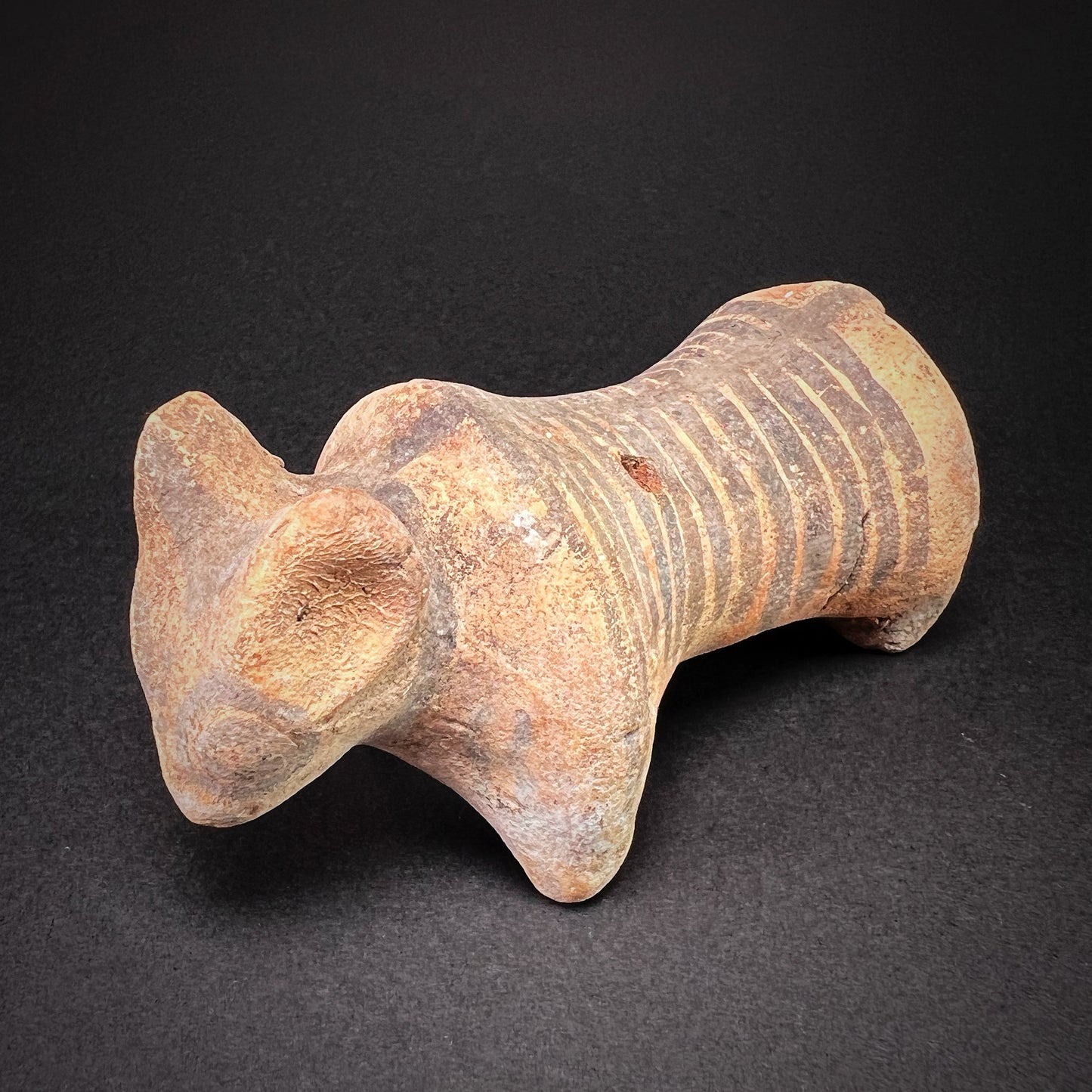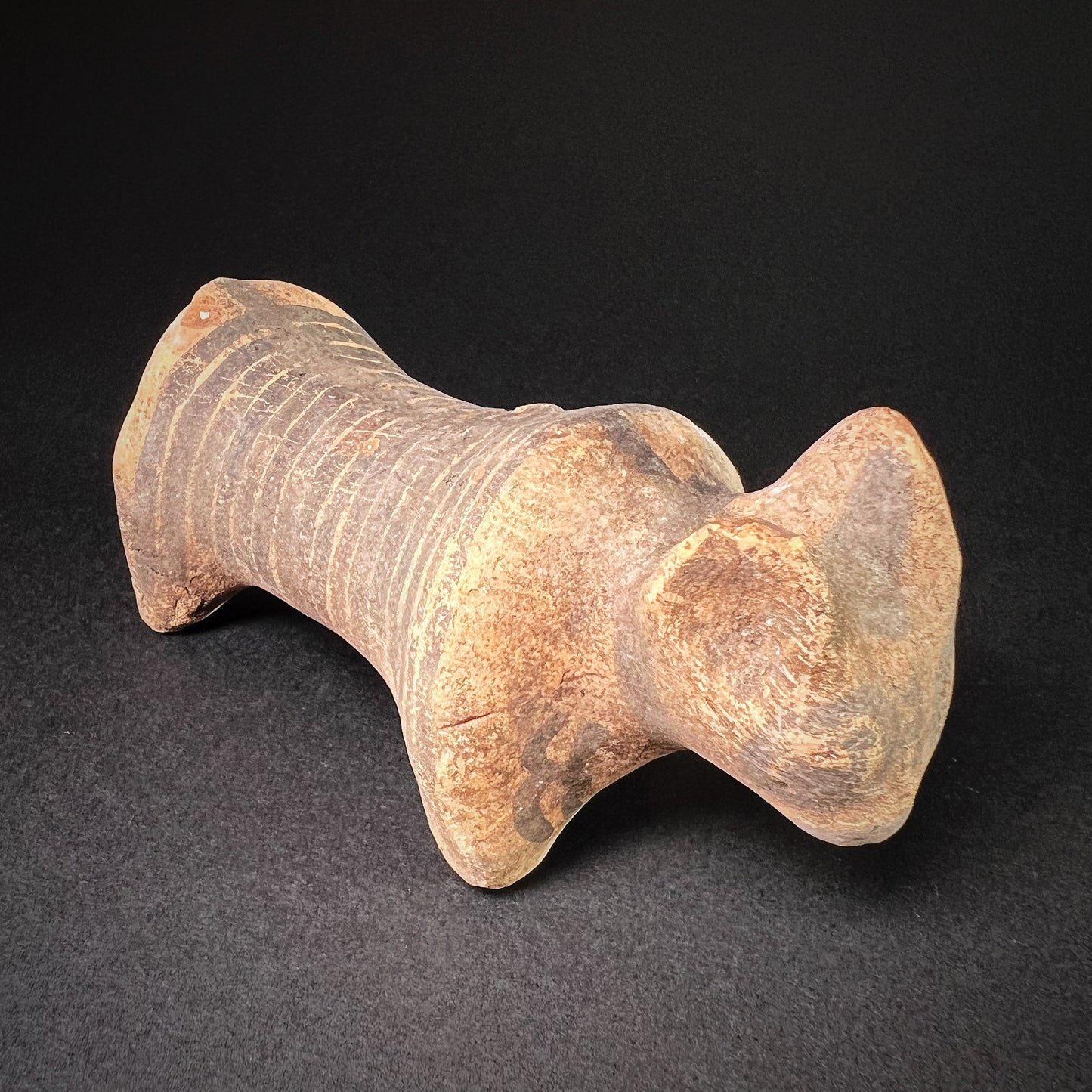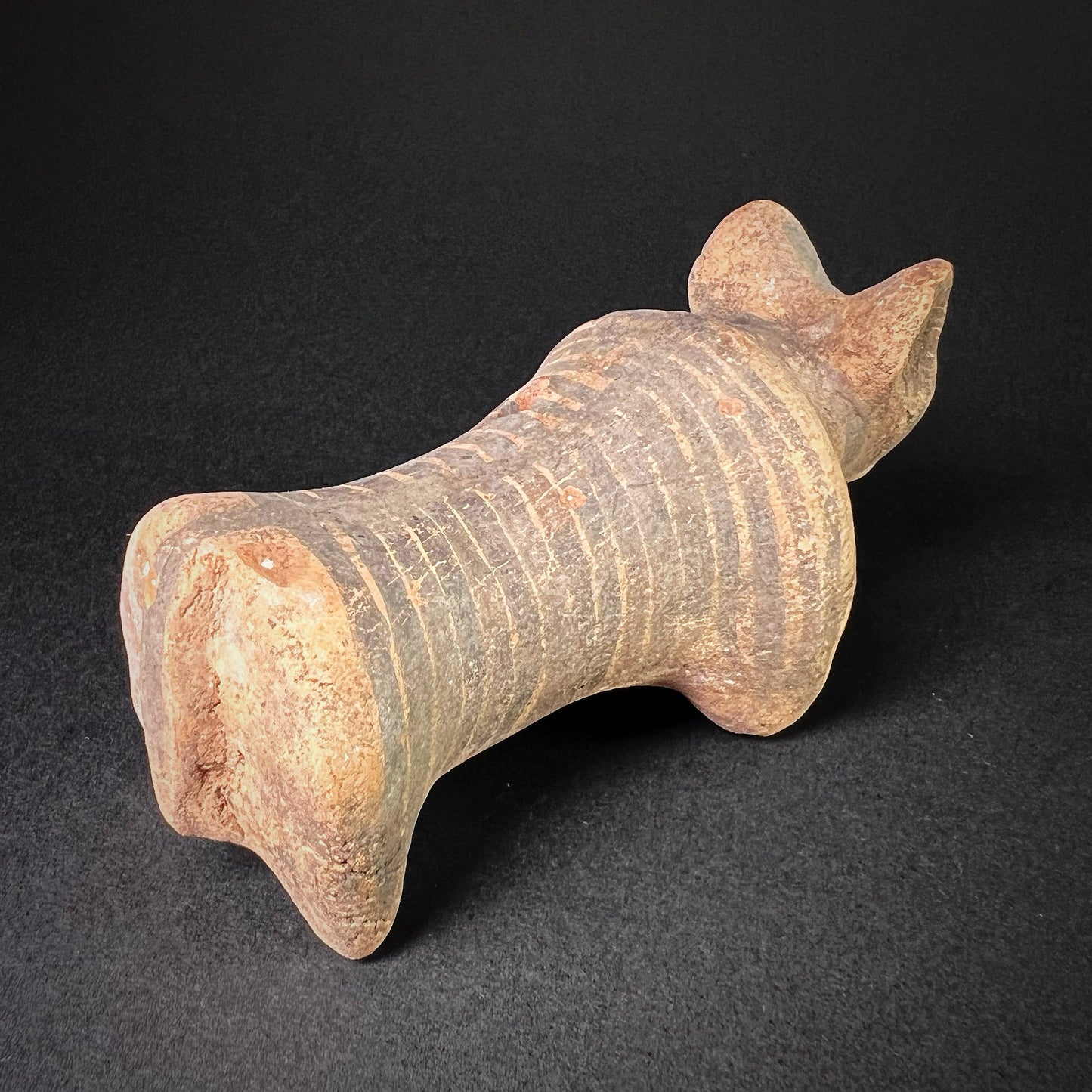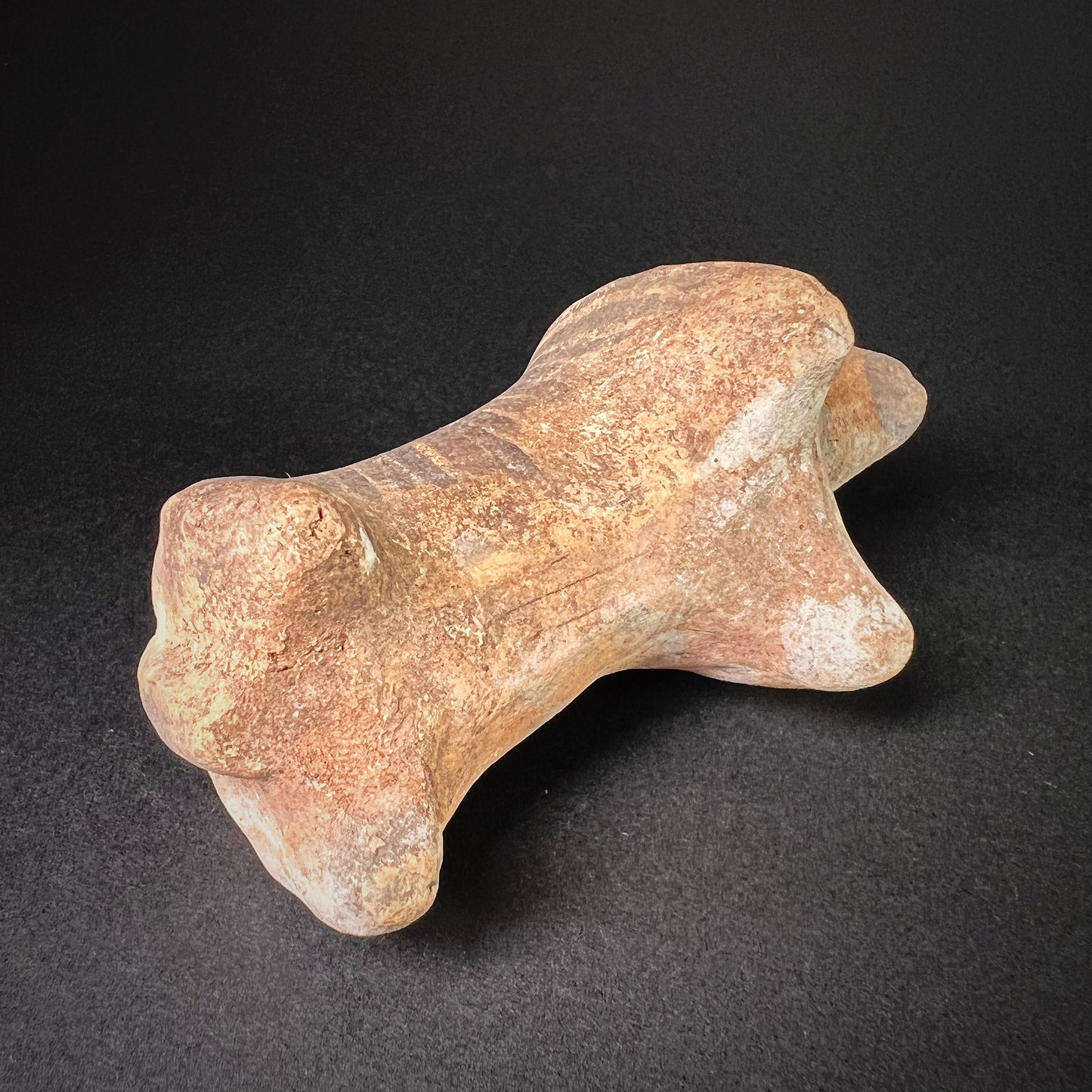Harappan Terracotta Tiger Figure
Harappan Terracotta Tiger Figure
Couldn't load pickup availability
Harappan Civilization, c. 2600–2450 BC, Sindh, Pakistan
This magnificent Harappan terracotta tiger figure, dating to the Mature Harappan period (c. 2600–2450 BC), is a rare and striking example of early South Asian ceramic artistry.
Hand-built with remarkable skill, the small-sized figure features a rounded head, large perky ears, a pointed snout, a long tail, and four short, stubby legs. The surface is adorned with dark brown slip-painted stripes, meticulously applied to accentuate its powerful feline form. Additional painted stripes encircle the eyes, snout, and neck, enhancing its lifelike and expressive appearance.
Similar terracotta figurines have been unearthed at Mohenjo-daro and Harappa, reflecting a shared artistic and symbolic tradition across the Indus Valley Civilization (IVC). A distinctive feature of many Harappan animal figurines, including this one, is the fusion of front and back legs, a trait that suggests both aesthetic and functional intent. Some excavated examples from Chanu-daro reveal a hole in the belly, indicating they may have been mounted on sticks for use as puppets or ceremonial standards, as seen in Indus Valley seals. Other specimens feature holes on the back, hinting at possible musical or ritualistic applications.
The Indus Valley Civilization was one of the earliest and most sophisticated urban cultures of the Bronze Age, flourishing from 3300–1300 BC across present-day Pakistan, northwest India, and Afghanistan. Renowned for its meticulously planned cities, advanced drainage and water supply systems, and remarkable craftsmanship, the civilization stood as a hub of commerce, technology, and artistic innovation. Major cities such as Mohenjo-Daro and Harappa grew to populations between 30,000 and 60,000, while the broader civilization is estimated to have sustained between one to five million people at its peak.
This exquisite terracotta tiger offers a fascinating glimpse into the artistic, cultural, and technological advancements of one of the world’s earliest civilizations. Whether used as a symbol of power, a ritual object, or a playful effigy, it remains a testament to the ingenuity and creativity of the Harappan people.
Excellent condition. Surface wear commensurate with age, minor chips and scratches to the body, painted decoration partly faded, with encrusted patina and rich earthen deposits throughout. Size approx. 10,0cm x 4,8cm x 5,1cm.
Provenance: Dutch private collection.
References and further reading:
The Harappan Civilisation: Its Sub-cultures, Roshen Dalal, The Pioneer, Thursday, 10 May 2018.
Indus Valley Civilization, Mark, Joshua J., World History Encyclopedia, Last modified October 07, 2020 (https://www.worldhistory.org/Indus_Valley_Civilization/).
The Indus Civilization: A Contemporary Perspective, Gregory L. Possehl, AltaMira Press, 2002.




-
Shipping
The shipment will be prepared in the course of 3-5 days and dispatched via Posti Group Oyj or purchased item(s) can be picked up from our shop during the store's opening hours (Tarkk’ampujankatu 4, 00140, Helsinki, Finland). Within the Finland, all items are shipped via Posti Group Oyj unless otherwise requested. We pack the items carefully and mainly in recycled materials because we want to save nature. You will receive the tracking number for your items by e-mail.
-
Returns
Returns and exchange will be accepted within fourteen days (14) of receipt at the purchaser’s cost to include freight and packaging. Items must be returned in the same condition as when they were shipped, and will not be accepted if damaged or altered in any way. Please inform us via email (info@gotanmaailma.fi) or by calling +358408408352 before sending. We do not accept returns more than 14 days after delivery.




